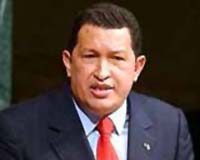 |
New Orleans, Louisiana (AFP) Aug 1, 2010 After months of uncertainty and frustration, crews were ramping up efforts to permanently seal the ruptured Gulf of Mexico oil well, which officials said could begin as early as Monday. The operation is one of two bids to definitively "kill" the damaged well, which has spewed noxious crude into the sea since April, devastating fragile habitats and bringing financial ruin to many residents along the US Gulf Coast. BP officials in recent days said they hoped the "static kill" operation would take place Tuesday, but on Sunday the US point man for the spill response, Coast Guard admiral Thad Allen, said it "could start as early as Monday night, depending on final testing of the mud injection systems." If successful, the "static kill" will allow crews to plug the well from above with cement, but the procedure is untested and similar to a previous "kill" attempt that failed at the end of May. Still, 104 days into the spill, Americans are desperate for a sign that the leak will soon be permanently capped, allowing the full focus of BP and government officials in the region to shift to clean-up operations and repairing the economic damage caused by the worst oil disaster in US history. Somewhere between three million to 5.3 million barrels leaked into the Gulf between April 20 and July 15, when a cap placed over the wellhead was sealed, fully containing the flow of oil for the first time. While locals are eager to see the well plugged for good, there are fears that a successful kill operation will prompt a mass exodus of officials brought into the region to respond to the crisis. Crews have already begun collecting some of the millions of feet of protective boom after skimming vessels said they were having difficulty finding spilled crude on the sea surface anymore. But the president of Plaquemines Parish in Louisiana told CNN it was too early to scale back those operations. "The oil is out there," Billy Nungesser insisted, saying that he had ordered his parish sheriff to stop 12 trucks carrying boom from leaving the area. BP, which leased the Deepwater Horizon rig that exploded April 20, killing 11 workers and sparking the spill, has sought to reassure residents it will remain engaged and work to restore the area. "We've had some good news on the oil... but that doesn't mean we're done. We'll be here for years," said Bob Dudley, an American chosen to replace the gaffe-prone Brit Tony Hayward as BP's chief executive, as the energy giant tries to salvage what is left of its reputation. Many fishermen whose grounds were closed in the wake of the spill due to food safety concerns have found work assisting the clean-up effort but face an uncertain future. They could soon lose their jobs again as there is less oil to mop up and there are no guarantees they will be able to return to fish soon in Gulf waters that could be contaminated for months or even years to come. Documents released by Congress Saturday detailing the use of chemical dispersants in the Gulf added to concerns about the long-term effects for the region. "BP carpet-bombed the ocean with these chemicals, and the Coast Guard allowed them to do it," said Democratic Representative Edward Markey, chairman of the House energy and environment subcommittee. BP and the US response team have said more than 1.8 million gallons of dispersants have been used to break up the oil, but Markey said studies show the amount could be far higher. "The validity of those numbers are now in question," he said. Admiral Allen addressed the concerns Sunday, insisting to reporters that he was "satisfied that dispersants were only used when needed," and that it was the US government on-scene coordinator's decision to use dispersants and not BP's. Meanwhile on Sunday engineers were carrying out final tests to ensure the integrity of the wellhead, BP said. Once the static kill is under way, engineers will pump heavy drilling fluid called "mud" into the cap in a bid to push the oil back down into the well reservoir. If that works, crews will then seal the well from the top with cement. Then, as early as next weekend, BP plans to begin a "bottom kill" by intercepting the damaged well deep below the seabed with a nearly completed relief well. Engineers plan to first drill into the pipe to check the "static kill" has worked before cementing in the outer well bore and blocking the oil reservoir once and for all.
Share This Article With Planet Earth
Related Links Powering The World in the 21st Century at Energy-Daily.com
 Venezuela sends troops to Colombian border: Chavez
Venezuela sends troops to Colombian border: ChavezCaracas (AFP) July 30, 2010 President Hugo Chavez said Friday that Venezuela has deployed military units and troops to the Colombian border, because outgoing President Alvaro Uribe is "capable of anything," as a row escalates between the two. Chavez broke off diplomatic relations with Colombia on July 22, one week after Uribe accused Venezuela of harboring 1,500 leftist Colombian rebels in its territory, a charge Chave ... read more |
|
| The content herein, unless otherwise known to be public domain, are Copyright 1995-2010 - SpaceDaily. AFP and UPI Wire Stories are copyright Agence France-Presse and United Press International. ESA Portal Reports are copyright European Space Agency. All NASA sourced material is public domain. Additional copyrights may apply in whole or part to other bona fide parties. Advertising does not imply endorsement,agreement or approval of any opinions, statements or information provided by SpaceDaily on any Web page published or hosted by SpaceDaily. Privacy Statement |